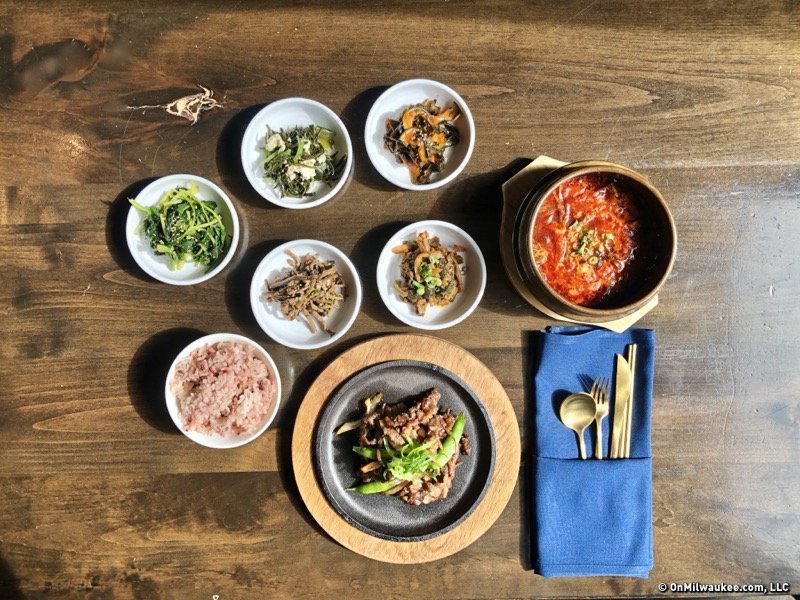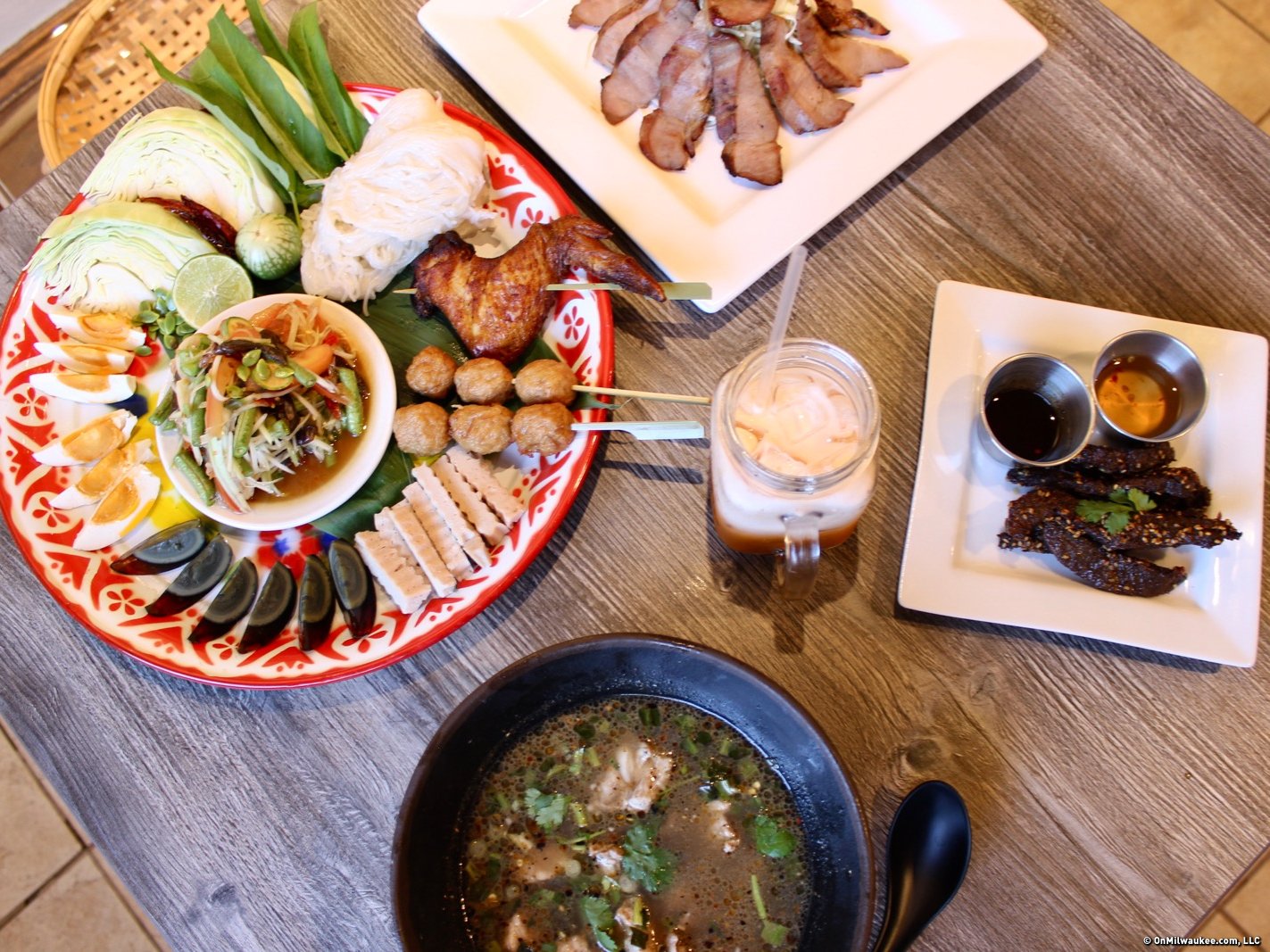Korean cuisine is, by definition, communal. Meals – comprised of larger dishes, soups or stews and side dishes – are shared among friends and family members (elders partaking first and others following in their lead).
The everyday dinner menu at Char’d, 222 E. Erie St., offers diners a glimpse of this communal style of dining with its unique grilled meats and ssam. However, a new Sunday Special Menu at the Third Ward restaurant aims to provide guests with an even more traditional Korean cultural experience.
Char’d General Manager Hank Kim, who initially came to the U.S. from Seoul, Korea to attend college in Florida, says modern Korean families are typically busy. But they make it a point to get together for meals when they can.
"Sundays were always the day that my family tried to gather for a big meal together," he says. "It was a time when no one was working and we could spend time together."
Hank says that Char’d customers have also expressed an increasing interest in experiencing more traditional Korean dishes. So owners Lane Kim and Choonghoon Lee decided to offer guests a traditional Korean meal during both lunch and dinner service on Sundays.
Dinners are $18 and include the guest’s choice of both a main course and a soup along with purple rice and a variety of side dishes (banchan). Alternatively, guests can opt for shareable serving of budae jigae (army stew), which serves two for $24. The cultural experience will be complemented by a playlist showcasing K-pop music.
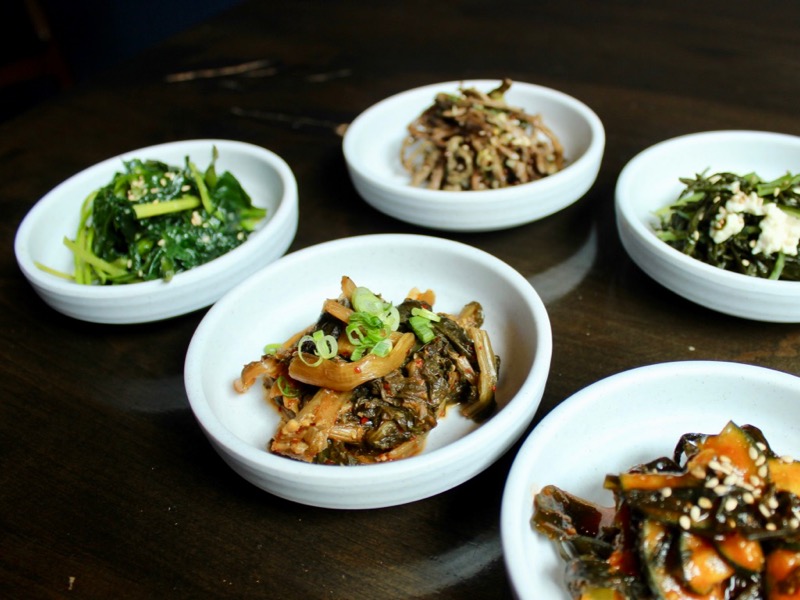
Banchan
If you’ve enjoyed a Korean meal before, you’re likely familiar with the notion of banchan (pronounced bahn-chahn). These side dishes are integral to a Korean meal, functioning to enliven the senses with a variety in colors, textures, flavors (from sour and salty to spicy and bitter) and preparation techniques. The types of banchan are endless; but most can be categorized by their preparation. Common types include fermented or pickled (kimchi and jangajji), vegetal or foraged (namul muchim), sauteed or stir-fried (bokkeum), braised (bokkeum), and steamed (bokkeum).
The types of banchan served in a Korean home vary based on a family’s individual tastes; they also play a vital role in the Korean view of food as medicine, with ingredients chosen for both their seasonality their specific health benefits.
Similarly, banchan at Char’d are likely to very from week to week. Some will be pickled, others sauteed or stir-fried. Most will be made with vegetables and ingredients that Chef Yosub Yoon discovers during his weekly trips to Asian markets around the city. It’s an excellent way to sample some new foods that you may never have tried.
For instance, last week’s offerings included braised radish leaves and eggplant cooked with sesame oil and seasonings.
Some banchan showcases namul (foraged or wild greens). Examples include fernbrake (Bracken fern stems) which Yoon stir-fries with scallions, sesame seeds and perilla seeds (also called tulggae or wild sesame seeds).

You might also find sauteed daikon leaves flavored with chili paste, scallions and garlic.
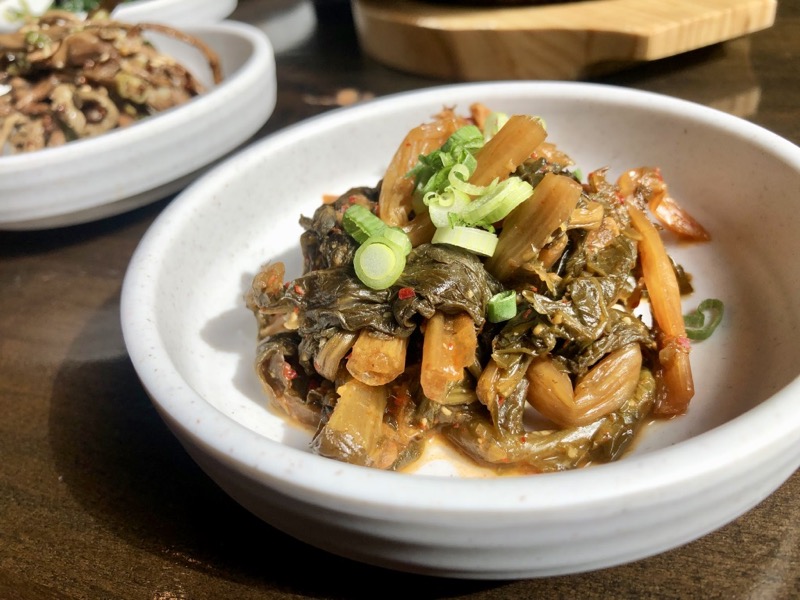
Another dish features chwinamul (aster scaber), a slightly bitter wild vegetable that grows in the mountains of Korea. Yoon sautees it with garlic, ginger and sesame oil.

Pickled banchan could include this combination of cucumber and seaweed which is flavored with vinegar and chili paste.

There might also be seaweed lightly dressed with vinegar, sugar and sesame and served with crumbled firm tofu.
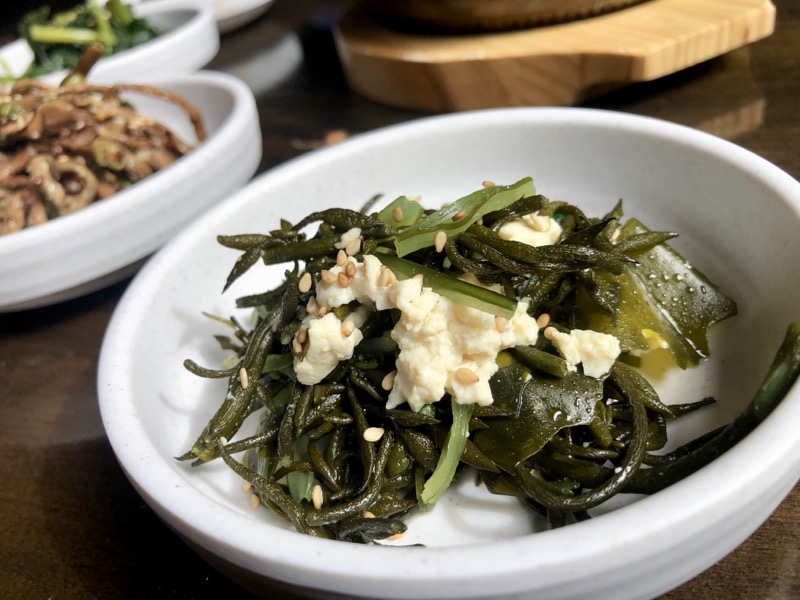
Korean banchan (and usually main dishes as well) are designed to be eaten in a communal alternating fashion. Typically that means eating a bit of your main dish, soup or stew in between bites of rice. The banchan becomes a flavor-enhancing part of that rotation. Typically, you’ll scoop a bit of banchan and eat it with rice to accompany. But you can also do the same with your main course; in doing so, you’ll discover both new interesting flavor combinations and complementary textures.
Choices Choices
When it comes to choosing your main dish, Char’d offers five options: beef or pork bulgogi (thinly sliced marinated meat grilled with snap peas, mushrooms, onions, carrots and scallions).
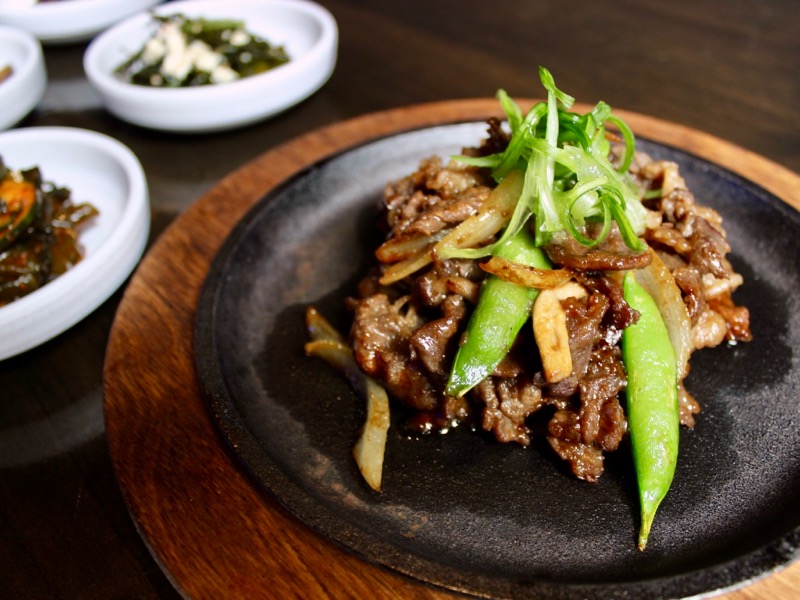
Additional dishes include dakgalbi (chicken thighs seasoned with spicy cumin curry and grilled with potatoes, mushrooms, onions and scallions); ojingeo bokkeum (squid stir fried with mushrooms, onions and scallions in spicy guchojang); and bibimbap featuring beef or mushrooms, carrots, bean sprouts, zucchini, edamame, pickled radishes, red cabbage and a sunny-side-up egg (a choice of spicy or mild sauce is served on the side; you can mix it in little by little as you eat).
Soups include yukgae jang, a spicy soup featuring pulled beef, fernbrake, taro, onions, scallions and strands of egg (pictured).
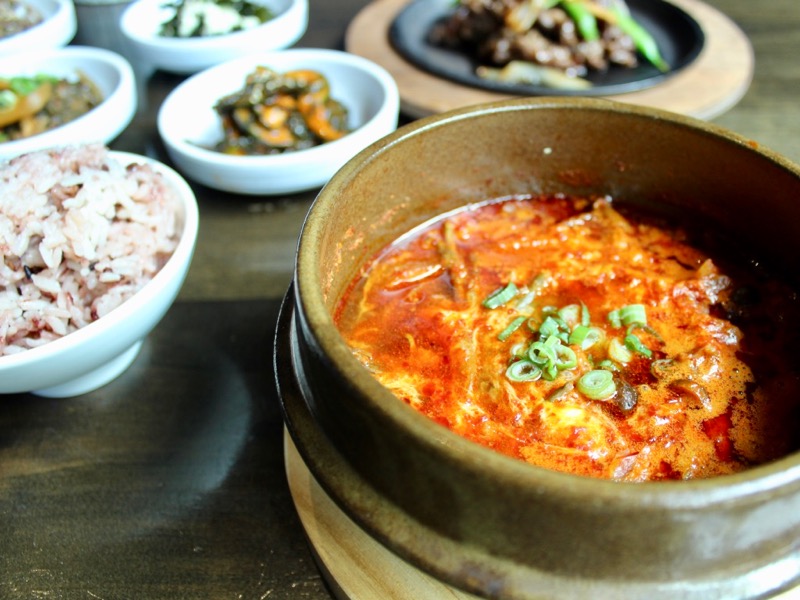
There's also soondubu, a spicy stew featuring squid, silken tofu, zucchini and onions with thin, silken strands of egg; doenjang guk featuring a mild broth made with distinctively complex Korean miso (doenjang), cabbage, tofu, onions and scallions; and galbi tang (available for an additional $2), a clear, remarkably delicate soup fortified with beef short ribs, Korean radishes, glass noodles and scallions.
If you opt for the budae jigae (a large portion of stew which serves two for $24), you’ll experience one of the most popular hot pot dishes served in Korea. It contains ramen noodles, vegetables like zucchini, mushrooms and onions, traditional Korean ingredients like kimchi and tofu, and American processed meats including bacon, sausage and Spam (ingredients introduced to Korea by the American military during the Korean War).
No matter which dishes you choose, take the time to enjoy the moment. Embrace the people you’re with. Sit back, relax and prepare to share your bites in true hospitable Korean style.
Char’d’s Korean meal is available on Sundays from 11:30 a.m. to 9 p.m.
As a passionate champion of the local dining scene, Lori has reimagined the restaurant critic's role into that of a trusted dining concierge, guiding food lovers to delightful culinary discoveries and memorable experiences.
Lori is an avid cook whose accrual of condiments and spices is rivaled only by her cookbook collection. Her passion for the culinary industry was birthed while balancing A&W root beer mugs as a teenage carhop, fed by insatiable curiosity and fueled by the people whose stories entwine with every dish. Lori is the author of two books: the "Wisconsin Field to Fork" cookbook and "Milwaukee Food". Her work has garnered journalism awards from entities including the Milwaukee Press Club. In 2024, Lori was honored with a "Top 20 Women in Hospitality to Watch" award by the Wisconsin Restaurant Association.
When she’s not eating, photographing food, writing or planning for TV and radio spots, you’ll find Lori seeking out adventures with her husband Paul, traveling, cooking, reading, learning, snuggling with her cats and looking for ways to make a difference.

